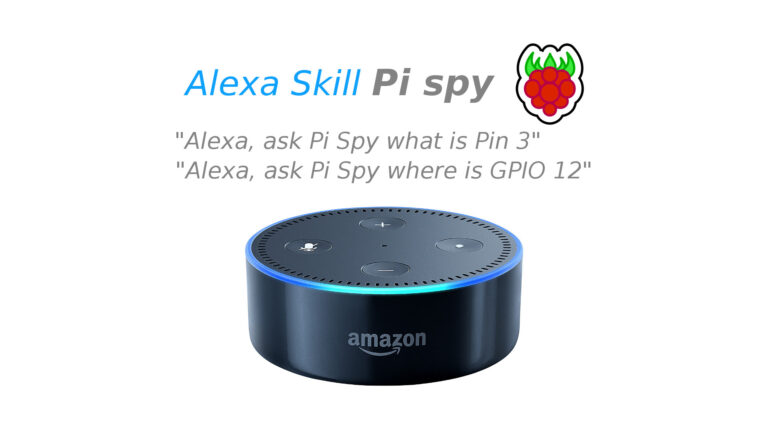The “Pi Spy” Raspberry Pi Alexa Skill allows you to ask about the GPIO header pins, location of specific GPIO numbers and details of specific interfaces. It will also tell you when a particular Raspberry Pi model was released.
You can find the “Pi Spy” Skill in the US, UK and Canadian Amazon Skill stores.
Simply enable in the Alexa App. It’s free!
It’s easy to look up GPIO information when you’ve got both hands free using a GPIO diagram but wouldn’t it be nice to clarify pinouts while you are soldering? Or perhaps while testing circuits with a multimeter?
Here are some example questions you can ask :
Alexa, ask Pi Spy what is Pin 2?
Alexa, ask Pi Spy where is GPIO 18?
or
Alexa, ask Pi Spy where is the Serial interface?
Alexa, ask Pi Spy where is the I2C interface?
Alexa, ask Pi Spy where is the SPI interface?
Alexa, ask Pi Spy where are the power pins?
Alexa, ask Pi Spy where are the ground pins?
or
Alexa, ask Pi Spy when was the Pi 3 released?
Make sure you pronounce GPIO as “gee-pee-eye-oh” and don’t rush.
I’ve got some ideas for additional content which I will add over the coming months.
Privacy Statement
My Raspberry Pi Alexa Skill processes the data passed to it via the Amazon service. This is a set of words and data relating to your request (for example a pin number or feature name). My Python code then uses that to formulate the response to pass back to your device. I don’t store any requests or attempt to track any usage. The Amazon system does collect metrics in accordance with the terms and conditions they set out for their Alexa service.
Finally, this Skill does not attempt to sell you anything or provide any advertising.
Buy an Amazon Echo Device
There are a number of Alexa Devices available. I’ve a few Echos and a two Dots. Take look at Amazon.com and see if something takes your fancy.





2 Comments
Is Pi Spy only available through Amazon/Alexa UK? It is not showing up when I looked from my US account.
The Skill was published on the UK Alexa Store. Amazon copy them across to the US store but this process is a bit of a mystery. I think it is based on popularity so if people use the UK version Amazon are more likely to copy it across. I’m going to try adding an “English (UK)” translation to see if that helps speed up the process. Translating from UK to US English shouldn’t be too difficult 🙂